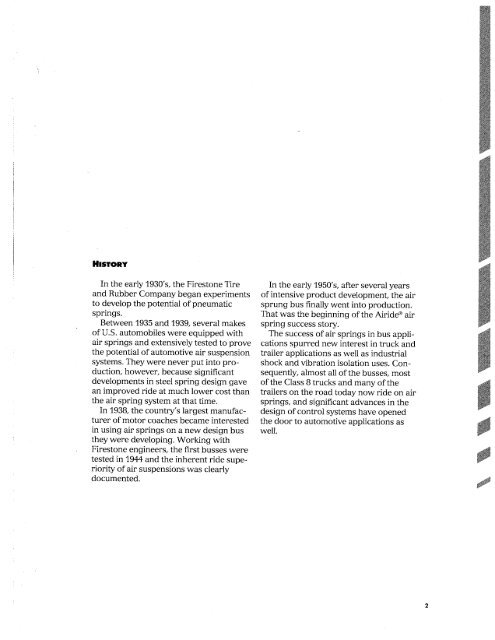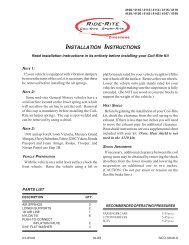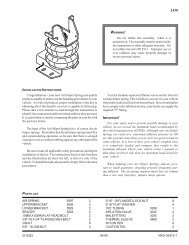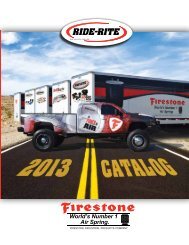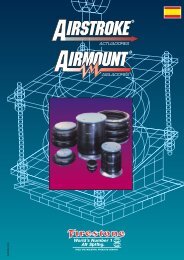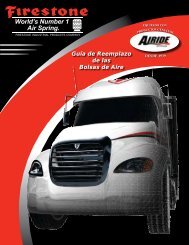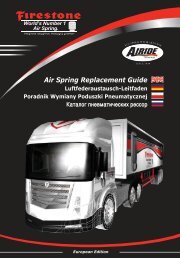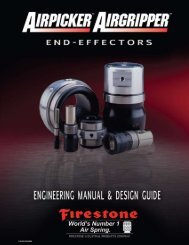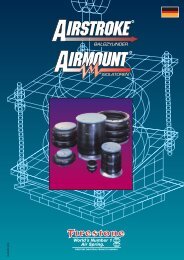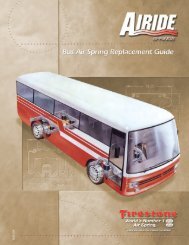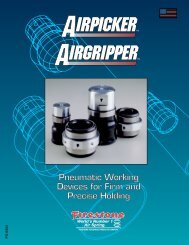AirSpring. - Firestone
AirSpring. - Firestone
AirSpring. - Firestone
You also want an ePaper? Increase the reach of your titles
YUMPU automatically turns print PDFs into web optimized ePapers that Google loves.
HISTORY<br />
In the early 1930's, the <strong>Firestone</strong> Tire<br />
and Rubber Company began experiments<br />
to develop the potential of pneumatic<br />
springs.<br />
Between 1935 and 1939, several makes<br />
of U.S. automobiles were equipped with<br />
air springs and extensively tested to prove<br />
the potential of automotive air suspension<br />
systems. They were never put into production,<br />
however, because significant<br />
developments in steel spring design gave<br />
an improved ride at much lower cost than<br />
the air spring system at that time.<br />
In 1938, the country's largest manufacturer<br />
of motor coaches became interested<br />
in using air springs on a new design bus<br />
they were developing. Working with<br />
<strong>Firestone</strong> engineers, the first busses were<br />
tested in 1944 and the inherent ride superiority<br />
of air suspensions was clearly<br />
documented.<br />
In the early 1950's, after several years<br />
of intensive product development, the air<br />
sprung bus finally went into production.<br />
That was the beginning of the Airide (R) air<br />
spring success story.<br />
The success of air springs in bus applications<br />
spurred new interest in truck and<br />
trailer applications as well as industrial<br />
shock and vibration isolation uses. Consequently,<br />
almost all of the busses, most<br />
of the Class 8 trucks and many of the<br />
trailers on the road today now ride on air<br />
springs, and significant advances inthe<br />
design of control systems have opened<br />
the door to automotive applications as<br />
well.


